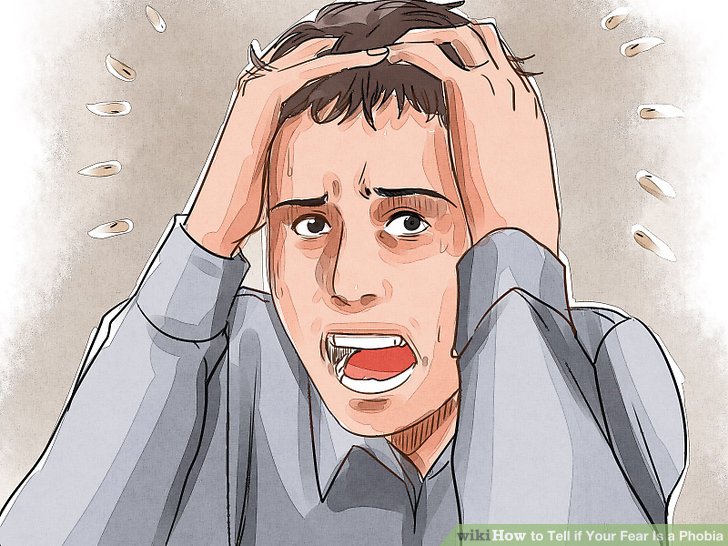Take the Extreme Trypophobia Test
Everyone feels anxious, scared and uneasy from time to time. People experience fear every day when starting a new job, planning a trip, or visiting a doctor. You feel shaky, your palms sweat, and your heart suddenly starts beating really fast. Nelson Mandela once said: The brave man is not he who does not feel afraid, but he who conquers that fear. However, we should never underestimate fear. Unlike general anxiety that can be experienced every day, fear can turn into a phobia and prevent someone’s ability to perform activities of daily living. Sometimes that fear can manifest itself in the most obscure of ways.
Trypophobia can produce that kind of fear. Most of the people who have Trypophobia didn’t know they had it until taking the Extreme Trypophobia Test. This test bombards its viewers with random images of clusters of holes. Yes, you heard it right! Extreme exposure therapy! This type of phobia is described as a fear of holes, and people who suffer from this kind of phobia are being called Trypophobes. It is numerous small holes or objects that have holes on themselves that can produce serious panic attacks. Other feelings that you may experience are sweating, trembling, rapid heartbeat, itchiness, discomfort, nausea, aggression, vomiting, etc. Some sufferers even start to cry or become very aggressive when encountering clusters on holes like lotus seed, honeycomb, and holes in the cheese or on a coffee cream. So if you experience this kind of discomfort when looking at these things, you just might have Trypophobia.
The Trypophobia test that went viral

The Trypophobia Test went viral
People suffering from Trypophobia feel uncomfortable when looking at any surface that has small, compressed holes. A video which was published on YouTube recently seriously upset people who didn’t know they had Trypophobia. Perhaps it does not sound like anything terrible, but Trypophobia seriously affects a majority of the world’s population. Apparently, even a glimpse of a group of tightly compacted small holes can cause panic attacks, uncontrollable itching and nausea, and an unsettling feeling in sufferers.. So, would you like to know if you have trypophobia? A prominent Youtuber has set up a video clip with instructions and images to self diagnose Trypophobia. Little did he know that his video would go viral on YouTube. With over 3 million views (and still counting) people still continue to be adversely affected by this test. Most viewers of this video couldn’t even finish the test. Approximately 80% of the viewers couldn’t watch the entire clip due to the fact that they were experiencing varying levels of Trypophobia.
So what is the Trypophobia test really about?
The procedure is quite simple to follow, all you need to do is to sit in a comfortable chair and try to look as many pictures as long as possible. The pictures vary on levels of . The amount of time that respondents took to complete the survey was two minutes and 30 seconds. In order for you to determine whether you are a Trypophobe, all you need to do is count the seconds until the end of the video clip and don’t fill a thing. Each image was shown for a random interval between 2 and 30 seconds. The author of the clip also made the following suggestions:
– Relaxed, shoulders, elbows close to body
– Arms parallel to floor resting on arm support
– Backrest must support the lower back
– Back support must be at a 105-degree angle on the seat
– Top of screen to be at eye level
– Sit back-thighs must fully rest on chair
– Back of legs (calves) must be at a 90-110 degrees angle to the back of the thighs
– Soles of the feet must be flat on the floor

Trypophobes fear clusters of holes
While the images were being displayed, it is important that you have the right posture and that the screen should be adjusted at an eye level. The test was provided for educational uses only and was not administered professionally. The results of the trypophobia test were fascinating. To produce this kind of effect, the author made a slideshow of pictures which usually serve as strong triggers of trypophobia. It started with pictures of a hole on an apple and honeycomb, it continued with more terrifying pictures such as baby toads popping out of their mom’s skin. The author used some other triggers like lotus seed pod which is the most associated picture with trypophobia or the fear of cluster of holes. The video clip has also contained some pictures that we couldn’t even imagine being disgusting or produce the fear of holes like aerated chocolate, bubble in a coffee cream or dough. Besides pictures with holes on animal skin, the pictures with Photoshopped holes on human skin and those representing some diseases were the ones which caused major reactions.
Common symptoms and reactions
The reactions of the viewers were inconceivable. While some of them wrote comments like: “Didn’t make me itch, I just wanted to pick or destroy them all. I’m not afraid of holes and clusters. They make me uneasy and I want to destroy them. Been this way ever since I was young. I destroyed one of my mom’s cactus cause of it. “, a vast majority of them actually experienced major discomfort and fear of holes. Most of them didn’t finish watching the video until the end. The average time rate for people looking at these pictures was from 7 seconds to 30 seconds. Some comments were 25.18 seconds, 30.97 seconds, 17 seconds etc. The symptoms that Trypophobes generally experience are:
– a sense of fear and discomfort,
– panic attacks,
– feeling that something is crawling on your skin,
– itchiness
– disgust,
– anxiety,
– sweating,
– nausea,
– increased heartbeat
– body trembling etc.
The participants who have watched the video clip made comments such as “My arm went numb” or “I want to destroy those disgusting holes! And I felt nauseous watching this and itching all over”. For the first time, some of them discovered that this fear has a real name and it’s called trypophobia. After finishing the trypophobia test, one of the participants stated that: “I honestly didn’t know there was a name for this or that other people even had this issue. People didn’t understand what I meant when I said that clusters (which I usually just say “c-words,” to my friends that know) terrified and grossed me out, other than some admitting they were mildly gross to them.” The symptoms such as itchiness, disgust, and the urge to destroy the holes were expressed the most.
What do scientists say about trypophobia?
Trypophobia hasn’t been recognized by the American Psychiatric Association and studies that were conducted so far have not given concrete answers about this type of fear of holes. New psychological theory considers that this type of phobia is caused by various deadly diseases that have affected people through history. Namely, many infectious diseases are causing round shapes on the skin (measles, typhus, rubella, etc.) that people perceive as uncomfortable and extremely uncomfortable phenomena due to the appearance of the human body. Some evidence suggests that the fear of such circular forms was evolutionary.

Scientists have not classified Trypophobia as a real phobia
Namely, poisonous animals have always been a sign of alertness and danger, and the best examples are poisonous snakes or the image of octopus associated with lotus seed pod. Some scientists believe that discomfort is due to the fact that people need a greater amount of effort and oxygen to process these images. The most recent study published in PeerJ(https://peerj.com/articles/4185/) and conducted by a team of psychologists at Emory University used eye-tracking technology, measuring any sort of change in pupil’s size when trypophobes watched the trigger pictures. They concluded that “findings, however, suggest that the physiological underpinnings for these reactions are different, even though the general aversion may be rooted in shared visual-spectral properties. The phenomenon, which likely has an evolutionary basis, may be more common than we realize.”
Even though scientists don’t have answers to all the questions about trypophobia, don’t worry, there are still many ways to treat this type of phobia. The most effective forms of treatment are exposure therapy, systematic desensitization and cognitive behavioral therapy combined with some other psychological therapies. These psychotherapies focus on changing people’s response to a trigger object or situation that causes the fear. Patients are being gradually exposed to these objects to reduce the stress, discomfort, and anxiety caused by clusters of holes. Trypophobes can seek help from a psychologist, and use some relaxation techniques (deep breathing exercises), physical activity and exercises for managing anxiety. It is best to seek advice from a doctor who will be able to identify symptoms and recommend adequate treatment.
We all experience fears. To overcome them is to gain power over yourself. So the best thing you can do is to face them because the fears we don’t face become our limits. Fear has two meanings: Forget everything and run or face everything and rise. The choice is yours.
Take the test now!
References
http://news.emory.edu/stories/2018/01/esc_aversion_to_holes/campus.html
https://www.youtube.com/watch?v=UwE3xcWjfe8&feature=youtu.be
https://openpsychometrics.org/tests/ITM/
https://www.healthline.com/health/trypophobia#diagnosis


